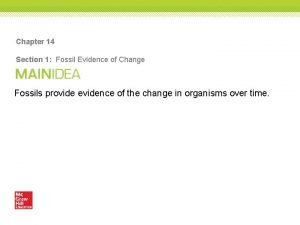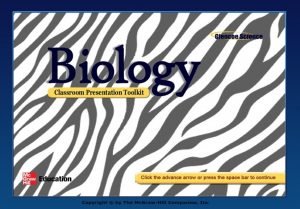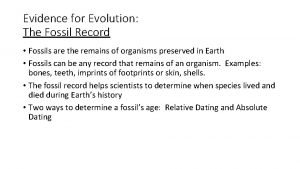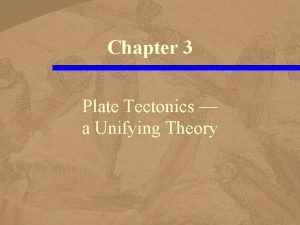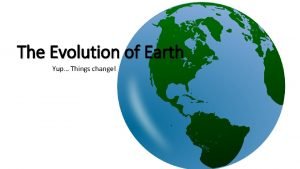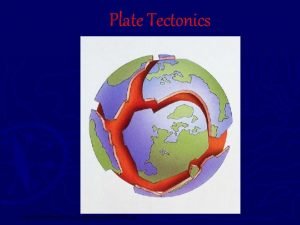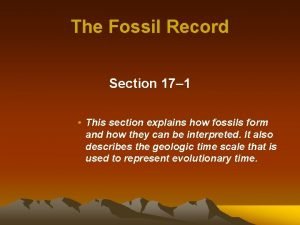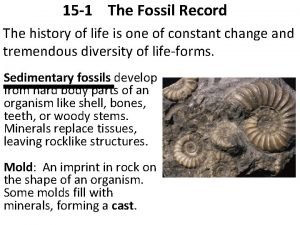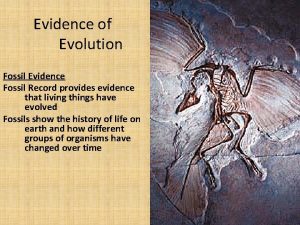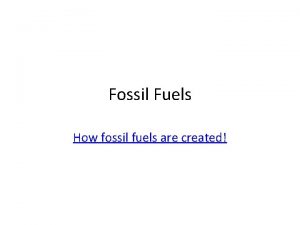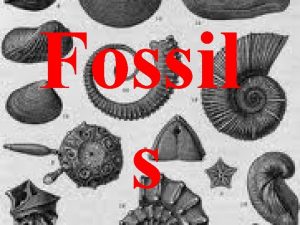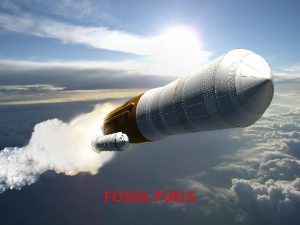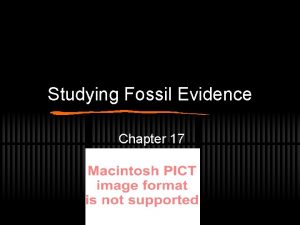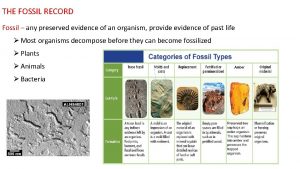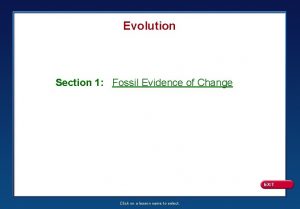Chapter 14 Section 1 Fossil Evidence of Change














- Slides: 14

Chapter 14 Section 1: Fossil Evidence of Change Fossils provide evidence of the change in organisms over time.

Essential Questions • What are the similarities and differences between Earth’s early environment and Earth’s current environment? • What is a typical sequence of events in fossilization? • How are the different techniques for dating fossils used? • What are the major events on the geologic time scale? Copyright © Mc. Graw-Hill Education Fossil Evidence of Change

Earth’s Early History Land environments • Earth formed about 4. 6 billion years ago. • Gravity pulled the densest elements to the center of the planet. • After about 500 million years, a solid crust formed on the surface. Copyright © Mc. Graw-Hill Education Fossil Evidence of Change

Earth’s Early History Atmosphere • The gases that likely made up the atmosphere are those that were expelled by volcanoes, such as water vapor (H 2 O), carbon dioxide (CO 2), sulfur dioxide (SO 2), carbon monoxide (CO), nitrogen (N 2), and hydrogen (H 2). • Minerals in the oldest known rocks suggest that the early atmosphere had little to no free oxygen. Copyright © Mc. Graw-Hill Education Fossil Evidence of Change

Clues in Rocks The fossil record • A fossil is any preserved evidence of an organism. • 99% of the species that have ever lived are now extinct, but only a small percentage remain as fossils. • Most organisms decompose before they have a chance to become fossilized. Copyright © Mc. Graw-Hill Education Fossil Evidence of Change

Clues in Rocks Fossil formation • Nearly all fossils are formed in sedimentary rock • The sediments build up until they cover the organism’s remains. • Minerals replace the organic matter or fill the empty pore spaces of the organism, or the organism decomposes and leaves behind an impression of its body. Copyright © Mc. Graw-Hill Education Fossil Evidence of Change

Clues in Rocks Dating fossils • Scientists who study fossils are called paleontologists. • Relative dating is a method used to determine the age of rocks by comparing them with those in other layers. • Relative dating is based on the law of superposition, which states that younger layers of roc are deposited on top of older layers. Copyright © Mc. Graw-Hill Education Fossil Evidence of Change

Clues in Rocks Dating fossils • Radiometric dating uses the decay of radioactive isotopes to measure the age of a rock • Technique depends on knowing the half life – the time it takes for half of the original isotope to decay – of the isotope in question. Copyright © Mc. Graw-Hill Education Fossil Evidence of Change

The Geologic Time Scale • The geologic time scale is a model that expresses the major geological and biological events in Earth’s history. • Geologic time is divided into two segments, the Precambrian and the Phanerozoic eon • Epochs are the smallest units of geologic time(>1 m years) • Periods are composed of two or more epochs (10 m years) • Eras consist of two or more periods (100 m years) • An eon is the longest unit of time in the geologic time scale, can include billions of years Copyright © Mc. Graw-Hill Education Fossil Evidence of Change

The Geologic Time Scale Precambrian • First 4 billion years (90 percent) of Earth’s history • Life first appears during the Precambrian • Autotrophic prokaryotes enriched the atmosphere with oxygen. • Eukaryotes emerged; first animals appeared. • Food chains were generally short and simple. Copyright © Mc. Graw-Hill Education Fossil Evidence of Change

The Geologic Time Scale The Paleozoic Era • The ancestors of most major animal groups diversified in what scientists call the Cambrian explosion. • First life on land emerges during this era • A mass extinction ended the Paleozoic Era, with 90% of marine organisms going extinct. Copyright © Mc. Graw-Hill Education Fossil Evidence of Change

The Geologic Time Scale The Mesozoic Era • Dinosaurs, birds, and mammals evolved during the Mesozoic Era • The K-T boundary is a layer of material in between the rocks in the Cretaceous and Paleogene periods with unusually high levels of iridium • Iridium is rare on Earth, but common on meteorites, suggesting a massive meteorite struck the Earth about 65 million years ago. • This meteorite impact changed the climate on Earth, wiping out the dinosaurs, many marine invertebrates, and many plant species. Copyright © Mc. Graw-Hill Education Fossil Evidence of Change

The Geologic Time Scale The Mesozoic Era • Geologic changes took place during the Mesozoic Era that shaped the course of evolution. • Plate tectonics describes the movement of several large plates that make up the surface of the Earth. • These plates, some of which contain continents, move atop a partially molten layer of rock underneath them. Copyright © Mc. Graw-Hill Education Fossil Evidence of Change

The Geologic Time Scale The Cenozoic Era • Mammals became the dominant land animals. • After the mass extinction at the end of the Mesozoic era, mammals of all kinds began to diversify. • Humans appeared very recently, in the current Neogene Period. Copyright © Mc. Graw-Hill Education Fossil Evidence of Change
 Chapter 14 section 1 fossil evidence of change
Chapter 14 section 1 fossil evidence of change The history of life section 1 fossil evidence of change
The history of life section 1 fossil evidence of change How are fossils evidence for evolution
How are fossils evidence for evolution Fossil and mountain chain evidence
Fossil and mountain chain evidence Pangea fossil evidence
Pangea fossil evidence Pangea fossil evidence
Pangea fossil evidence 17-1 the fossil record
17-1 the fossil record Fossil fuel deposits
Fossil fuel deposits Section 15-1 review the fossil record
Section 15-1 review the fossil record Primary evidence vs secondary evidence
Primary evidence vs secondary evidence Primary evidence vs secondary evidence
Primary evidence vs secondary evidence Secondary sources
Secondary sources Primary evidence vs secondary evidence
Primary evidence vs secondary evidence Jobs vancouver
Jobs vancouver Are fibers class evidence
Are fibers class evidence
